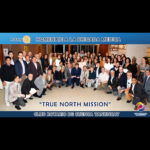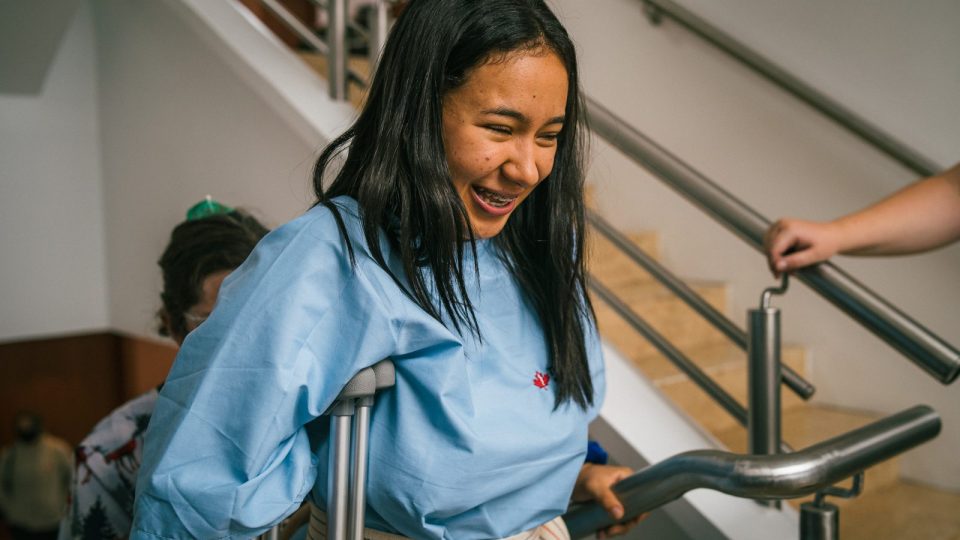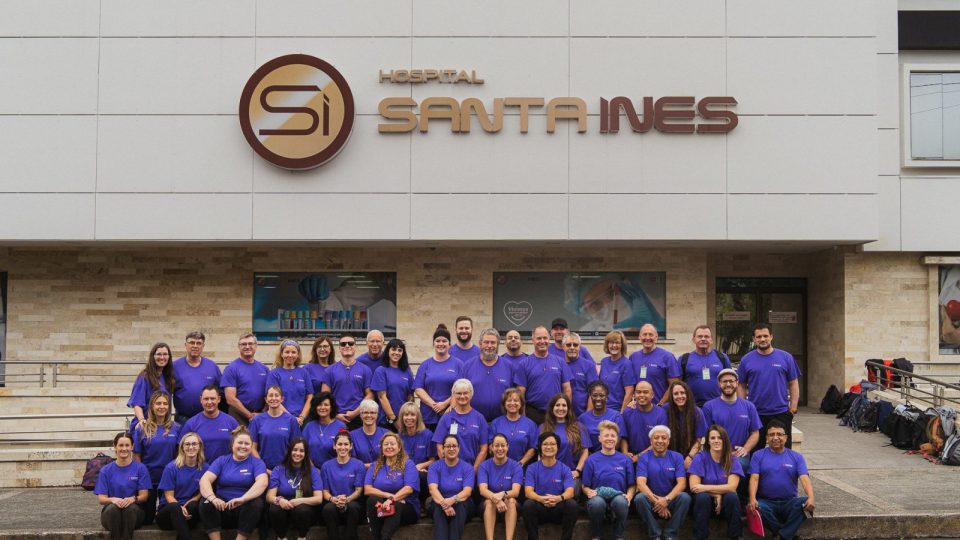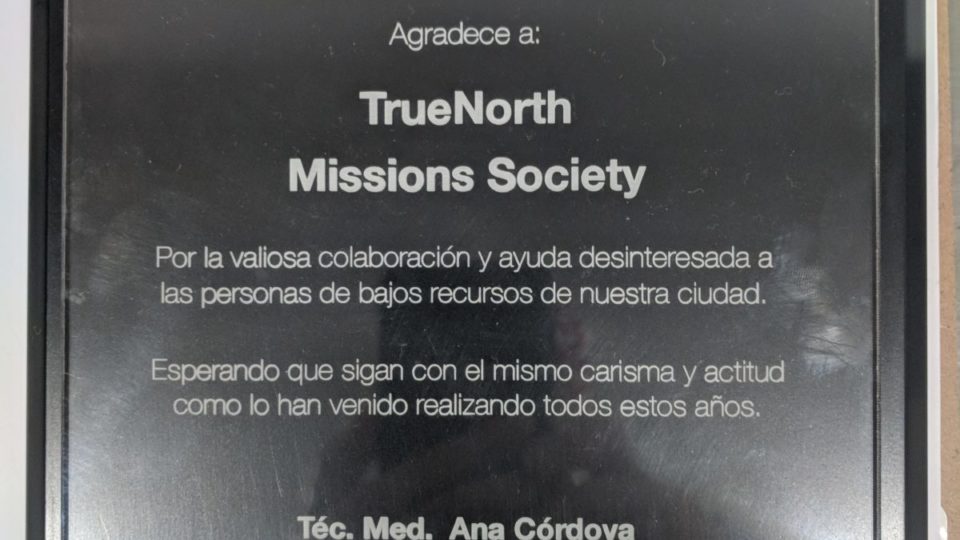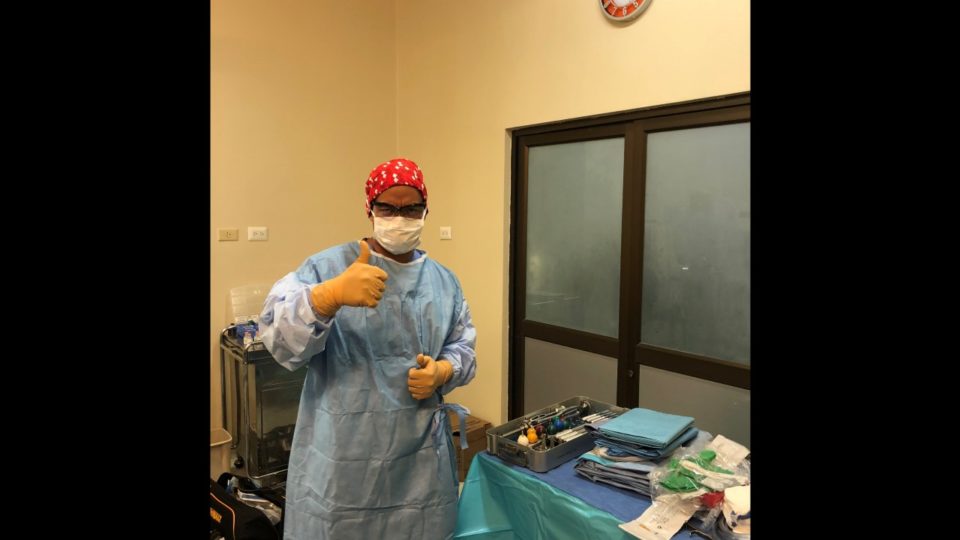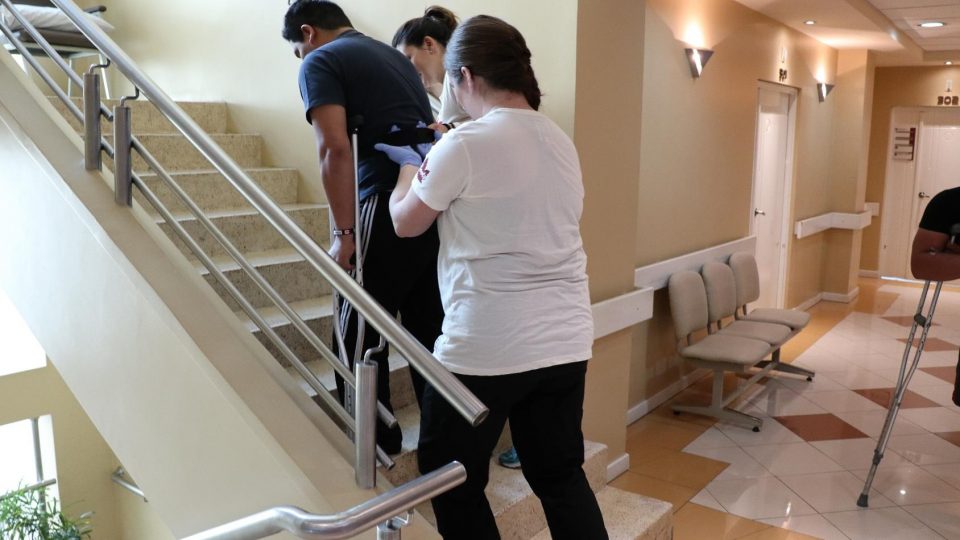Today begins with a 6:30 breakfast meeting and a brief outline of the charity’s history from Dr. Powell – now on his 9th mission to Ecuador – a few missions were with another group before the charity was initiated. He makes special note of one reason he was drawn to service the poor in Ecuador: there is a selection of the population, aged 18-32 (85-95% young women) who have significantly progressed high riding hip dysplasia and, sadly, these individuals become extremely socially disadvantaged at having to deal with the condition. They live with pain, may need to walk with a cane at a very young age, usually cannot work, and often, become outcasts in their community.
Volunteers offer self intros and Dr. Manuel Avila from Santa Ines Hospital joins the team at breakfast.
Today’s surgical cases are reviewed and discussed: 2 PAO’s and 2 total hips are scheduled for the team comprised of 5 orthopedic surgeons (incl: 1 orthopedic resident, 2 orthopedic fellows) and 3 anesthetists, 1 family physician/interpreter, 1 general surgeon, 5 scrub nurses, 1 RN, 2 recovery room nurses, 4 ward nurses, 2 processors, 1 medical instrument representative, 1 OR assistant/interpreter, 3 ward physiotherapists and 8 interpreter/general volunteers.
A meeting has been arranged by Ian MacPhail, one of our interpreters (has a strong and relevant career background in the medical implant industry), with the local rotary club on Monday evening. He is a rotarian and has been actively working towards facilitating alliances between his local rotary club in BC, other Canadian rotary clubs and this rotary club in Cuenca. The rotary’s automatic international links may work to multiply impact and support for the charity’s efforts. Specifically, the local connections of the rotary (supported by other international clubs) may allow our charity to contribute to a concentrated effort focused on offering assistance in education and establishing hip dysplasia and cancer screening programs in Ecuador. This would aid in the prevention of related serious conditions.
CPR training for local first responders this week will be led by Pam Railton over three evening sessions (MTW). Pam has taught CPR training in Canada for many years. We are so fortunate to have her medical expertise and organizational skills on our team, as well as her CPR training expertise. Dr. Manuel Avila notes how advantageous it will be to offer the CPR education as there are many casualties that can be avoided if CPR were taught. Even the local EMS do not have CPR training.
Breakfast is wrapped up and everyone heads to the hospital, more or less as a group, for the 5-6 block walk.
The first PAO of the day is delayed due to a local urgent care spinal case that comes into Santa Ines emergency – the C Arm (x-ray) bed that is used for PAO’s is needed for the spinal patient. That is alright – we wait – approximately 1 1/2 to 2 hrs. (you will see the x ray arm in one of our surgical suite photos from the PAO surgery later in the day). We are emphatic about not disrupting the needs and resources of the hospital for our sake.
Four surgeries were performed today however, for efficiencies one of today’s cases was swapped into tomorrow’s schedule, and one of Sunday’s patients slotted into today. Fortunate that the patient booked for Sunday was in the hospital for further assessment – B. L. received her shortening osteotomy surgery one day early.
We are awaiting one tote from the airport which was ‘lost’ enroute but is now in Quito airport and will arrive in Cuenca by end of day tomorrow. There are necessary implants and baby CPR mannequins in the tote. Thankfully, we will receive it soon.
One of today’s tasks was to compile ‘patient packs’ of medications and instructions to be sent home when they are discharged. The instructions have been compiled by our team in Canada and translated into Spanish for enclosure in the package. There will also be dressings, pain meds and other medicines to aid in recovery at home. Some of the medications were purchased in Canada and transported – others are ordered through one of our anesthetists, Dr. Bruno Ligier from the in hospital pharmacy and paid for by the charity. He will also order medications for use in surgery and recovery at the hospital.
You will see in our photos that Manuel Avila’s son-in-law, Alex, transported our physiotherapy volunteers to a supply store for crutches, commodes, walkers, supplies and water. These items will be used/donated. Numerous supporters of our charity specifically sponsored these items at our last fundraiser and we purchase locally as it is less expensive and supports this economy. Manuel’s two son-in-laws have been extremely helpful and readily assisted at clinic and with transporting our volunteers as necessary.
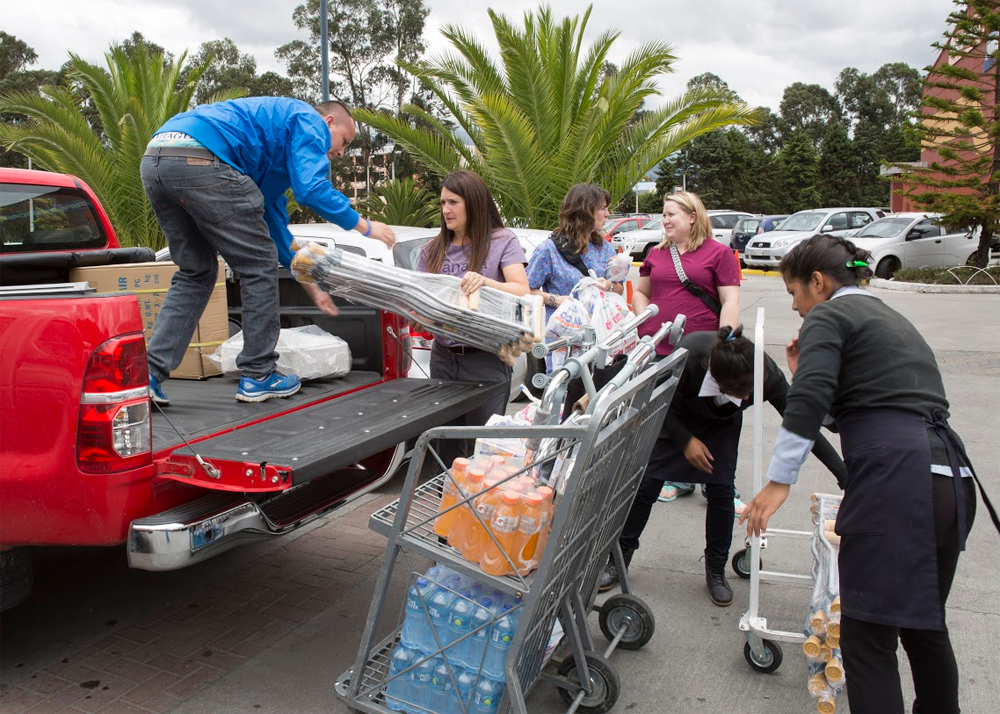
Physio Supply Run!
A special note about our processors: Kaleigh and Julie have a challenging job in the back rooms behind the O.R. – it is busy and very hot – they are the last to complete the day, after surgeries are finished, they have to clean, sterilize and restock the surgical instrument sets for the next day. Thankfully, other volunteers pitch in – early evening- to help complete the task, or these lovely young ladies would be up all night. Dr. Walley Temple and his wife, Doreen, were among those who assisted the processors today and there were interesting observations, from a surgeon’s perspective, of the instrument processing room….first of all, he is not too impressed with being ‘shot with hot air’ by one of our nurse volunteers, and…second, another observation from Dr. Temple’s wife “if surgeons had to clean their own instruments, they wouldn’t use so many” There were piles and piles of retractors! On the other hand, it is amazing to see what things these surgeons can do for people who are lame and disfigured…with saws, drills, hammers, chisels…and retractors. They are extremely resourceful, creative and talented at what they do.
Finally, today’s patients are through recovery and back in the ward for pain management and physiotherapy. J. D. was the first surgical patient and the first to be helped out of bed to stand/walk, only hours after surgery. He astonishes the physiotherapists and nurses by standing quite easily-being accustomed to living with daily pain, he is now free of the pain he lived with previous to the surgery. He now has the pain of recovery, which is much more bearable for him.


























